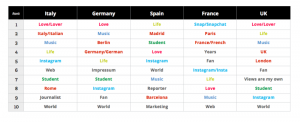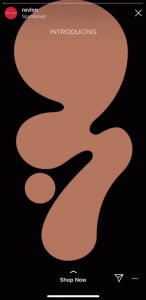
By Abbe Miller, Published November 13, 2014
The marketers that are on top of their game are the ones that no longer consider driving website traffic a challenge. Those marketers have a slew of tools and techniques at their disposal and have mastered how to use them. Their newest challenge, however, is ensuring that the traffic that lands on their website stays there.
In an eBook produced by Yottaa, a leader in CDN technology focused on website performance, the editors there made a few intriguing statements about what happens when visitors don’t engage well with a website:
- Some customers who click to your site never reach it. If your site doesn’t start loading fast enough, they bounce away.
- Other customers bounce as soon as they hit the first page. There might have been an error on the page, or they might not have liked the look of it. Either way, they’re gone, too.
- Still other customers click around the site and add items to the shopping cart, but leave before checking out. Something about the site turned them off.
To avoid those scenarios, Yottaa devoted the remaining bulk of the eBook to a formula that can help. The name of the eBook is, after all, “The New Conversion Equation: How to Engage Users in the Era of Vanishing Attention Spans.”
According to Yottaa, the equation for conversions is Q+C+Q=E. When marketers can present Correct, Quality content Quickly, the end result is customers that are engaged. In the eBook, the team at Yottaa broke down those three essential elements and offered advice on each:
1. Present content quickly
“No matter what your site looks like, or how great the content is, if it’s slow people will leave – to the tune of 40% in 3 seconds of waiting,” Yottaa explained. To keep that from happening, Yottaa recommends starting with a baseline for key metrics, like time to first byte, time to interact and time to start render. To determine your baseline, these metrics can be measured using tools like websitetest.com.
Once a baseline has been set, it will be time to start improving upon it. That can begin with backend optimizations, such as:
- Investing in a better hosting arrangement
- Investing in a content delivery network or CDN
Yottaa mentioned, however, that the bulk of the work will happen on the front end. Business users can reach out to the IT team to ask for assistance combining files (like image files) to reduce the number of trips from the visitor’s browser, to the server and back again that are required to render a page. An IT professional can also help reducing the weight of a site by:
- Compressing images – preferably through what’s called lossless compression, where it reduces bytes but not quality
- Minifying code – the process of removing whitespace and unnecessary comments from code
2. Present the right content
When Yottaa says “present the right content,” the editors there are primarily referring to the myriad of devices that folks are using these days. Therefore, the intended message is to “present the right content to the right device,” which is appropriately known as device targeting.
“You can program device targeting to send smaller or fewer pieces of content to certain users,” Yottaa editors explained. “For instance, you could hand-select which images are most important and send that smaller subset of images to mobile viewers with a 3G or lower connection. They will have approximately the same experience, but performance will be significantly better.”
When it comes to “presenting the right content,” Yottaa is also referring to when elements of a page load, which is called sequencing. Because, after all, some items should show up first. An example would be if an ad loaded before other important content, like a hero image.
Furthermore, the Yottaa eBook covered the idea of responsive loading or delay loading, which “gives the effect of an interactive and enjoyable experience, boosting engagement.” With this approach, website visitors can interact with a page right away instead of having to wait for all of it to fully load.
3. Present great content
There’s so much more to conversion rate optimization (CRO) than just changing the color of a CTA button or the placement of certain page elements. Every business is different, and therefore, much of the efforts behind optimization are based in understanding a business’s demographics as well as its products. Yottaa addresses this in its first step to CRO: Discovery.
By gathering information from living, breathing human beings, a business can better understand why or why not customers buy from them. This can be done by using tools like Google Analytics and surveys that can be imbedded into a site. Business leaders will also want to gather information to better understand specific products.
“Sometimes a website will not do a good job of communicating product USPs, even though they exist,” Yottaa editors relayed. “It is important that you’re able to spot these kinds of opportunities.”
To get insight, survey your own customer service support teams and your sales and marketing staff. And you don’t have to stop there. You can also research competing products to see how they are being displayed and received by online shoppers.
After collecting this insight, Yottaa then suggested that it be converted into a series of hypotheses. An example could be that “customers don’t understand that the product automates 70 percent of their work.” This could then be implemented as a hypothesis for an experiment: “If we make the key benefit more clear on the product page, customers will see the value of the product and will be more likely to buy it.”
Through A/B testing, a company can then discover whether their hypothesis had any merit and if it can be implemented for the long term for increased conversions. The Yottaa eBook offered up several specific ways to test hypotheses as well as tools that can be leveraged along the way.
Business Articles | Business 2 Community
(294)







